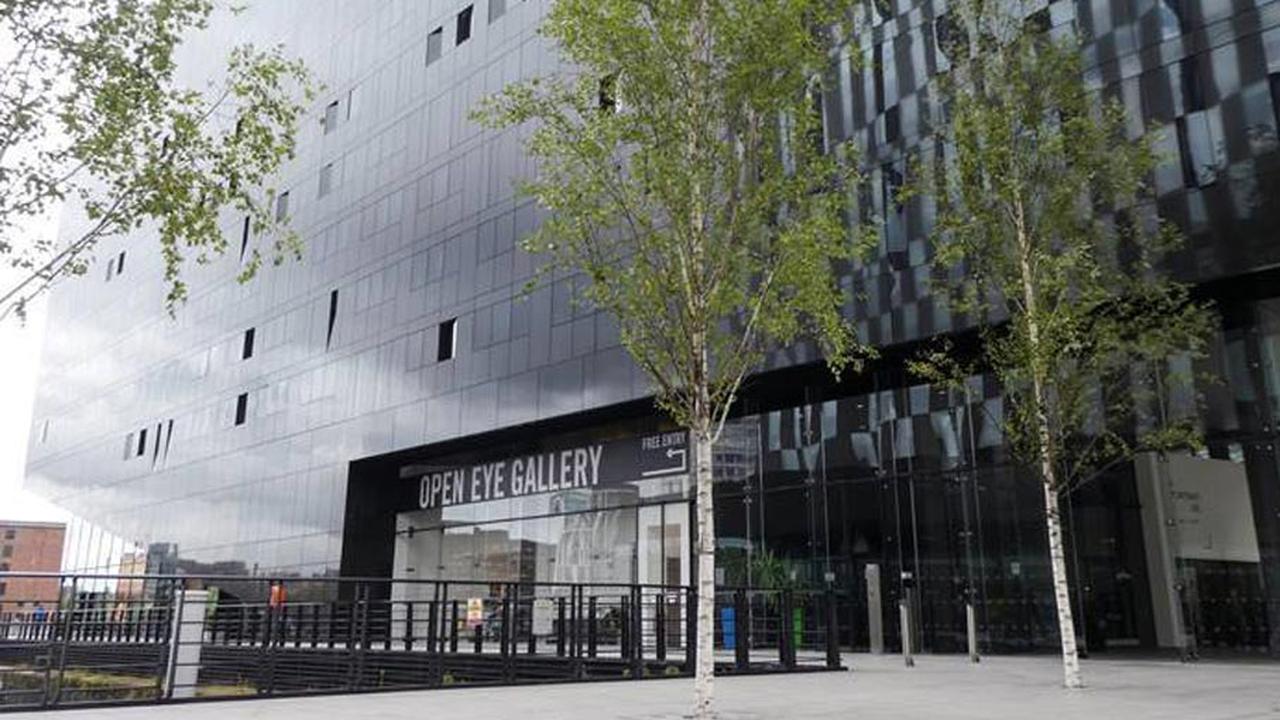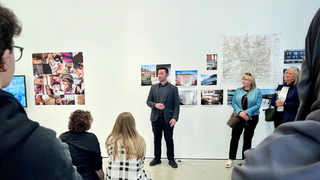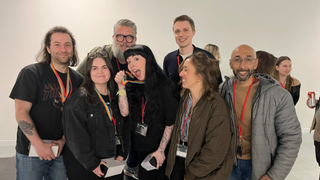Insight into Our Course Partner Open Eye Gallery

Our guest blog from Jacob Bolton gives an insight into our course partner.
Jacob Bolton is Communications Coordinator at Open Eye Gallery, which has partnered with UCEN Manchester to deliver unique photography courses.
UCEN Manchester’s FdA Contemporary Photographic Practices is an innovative course delivered in partnership with Open Eye Gallery which nurtures the skills, creativity, knowledge and ideas necessary for a broad range of photography careers - from art to fashion and advertising.
A new three year Open Eye Photography BA (Hons) will also launch in September 2021 and will see students benefit from access to the experiences and career pathways of tutors and professionals with extensive experience in the art world and industry photographic practices.
Jacob explains what life is like in a world renowned gallery and the many roles available within it.
But what do we actually do?
Guest blog - Jacob Bolton – Open Eye Gallery
Past the softly lit exhibition spaces and stages of every art gallery, theatre and music venue, there’s a room marked ‘STAFF’, behind which you’ll usually find bright lights, piles of books and a team of workers typing, planning and scheming away. When I tell people I work for a photography gallery, their first question is usually ‘are you a photographer?’ (short answer: no), followed by a pause, then the inevitable question: ‘so what do you all actually do...?’ Reader, a lot.
Cultural organisations — art galleries in particular — tend to hide all the work that goes into keeping them running, presenting exhibitions as finished products that are the single vision of one person. This is far from the truth.
It takes many people working together with many different skills to develop an exhibition, establish the framework, plan the layout, liaise with artists and collaborators, install it, promote it, ensure its accessible, run the launch event, keep the spaces clean.
This is in addition to all the other, less visible work: ensuring that we can stay funded, developing projects outside the gallery space, listening to audiences and making sure that we’re responding to people’s needs. This is the same across all arts organisations, and one of the big misconceptions about working in the arts is that it’s populated by artists, doing, well, ‘art’. I thought it might be useful to talk through the breadth of work that takes place under the roof of Open Eye Gallery (and many other roofs — we work all over the world!), demystify what galleries do, and show that there are many routes you can take if you want to work in the arts.
First things first, what is Open Eye Gallery? We’re an organisation that shares photography for everyone, with everyone, every day. We’re more than a building: we produce exhibitions, long-term collaborative projects, publications, festivals, and university courses — locally and worldwide. Crucially, we’re a charity that is publicly funded, and so the first thing we’re always thinking about is the people that we’re making work with and for: everyone that comes to use our spaces. We’re an extremely collaborative team: everyone’s work feeds into everyone else’s and as much as possible we develop everything we do in collaboration. On top of this, we’re always looking at ways we can collaborate more closely with everyone that uses our space, making ideas for events or projects that people send to us happen.
My role is called ‘Communications Coordinator’, which essentially means I work across the team to clarify, share and enable more people to experience what we do. It’s largely about lifting barriers — does this make sense and is it welcoming? Can people find this? Are we interesting and responding to what people feel is important? What’s stopping people from coming here or finding us or hearing about what we do? Practically, this involves sitting over our digital channels (website, social media etc), writing text to accompany projects, designing materials, promoting our programme to as wide a range of audiences as possible, developing text and graphics to accompany exhibitions, and working across the team to ensure everything is clear and coordinated.
Sat next to me is the curator, who takes a lead on organising and producing our exhibitions programme. Many different people constantly feed into the planning and delivery of this — both in and out of the gallery — but it’s the curator that leads on making things happen, and doing most of the nitty-gritty stuff: liaising with artists to figure out how best to show their work, contracts, budgeting, install plans, ensuring all artworks arrive (and leave) the gallery in good condition. They’re often giving talks to students, giving feedback to developing artists and once in a while heading to events to meet new people and keep their finger on the pulse.
On the other side of me is the Retail and Events Coordinator, a role which is a lot more than it sounds. They lead on running the front of house (essentially the public-facing part of the gallery which is the shop and reception desk) and look after all our volunteers. They also produce our events programme, ensuring that all events run smoothly. To do this, they’re in pretty much constant negotiation with people coming to present things at our space. This isn’t just visual artists, it’s writers, poets, filmmakers, community groups, all kinds of people.
Across from me is the operations coordinator, the real nuts and bolts of the organisation. They handle the huge amounts of admin, maintenance and organisation it takes to keep the team, building and organisation running. A big part of their work is finding opportunities for volunteers and placements both in and outside the gallery, and connecting people with opportunities to develop.
There’s also the Head of Engagement and Creative Producer, who work as a team. They work all over Liverpool (and Manchester) to develop long-term, collaborative projects. Their work is super varied but ultimately it’s about people, lots of working face-to-face with different groups, running workshops and residencies.
Then there’s the programme assistant, who works across the team to support all our various projects — a really flexible and varied role. And the cleaner, who keeps our spaces fresh and looking good. There are technicians too, that work across many organisations and come in temporarily to help out installing exhibitions. And finally the Director, whose work largely consists of managing us all, ensuring that we stay funded and planning out our overall strategic direction.
There’s a lot that I haven’t mentioned but the key takeaway is this.
There are a lot of different ways to work in the arts, and all organisations need a wide range of people with different skills: writing, organising, facilitating workshops, the list goes on and on.
It’s a fast, open and very collaborative environment and — crucially — we all feel good about the work we do each day.
Find out more about the wide range of Creative Arts and Digital Media courses at UCEN Manchester.

